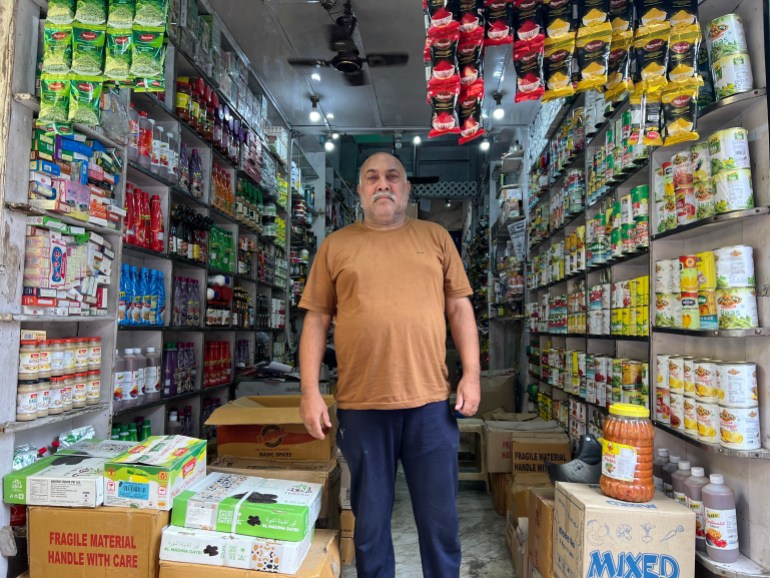In the Kashmir neighbourhood of Indian football legend Kakroo
Majeed Kakroo was forced to abandon the sport at the height of his career due to armed rebel threats.
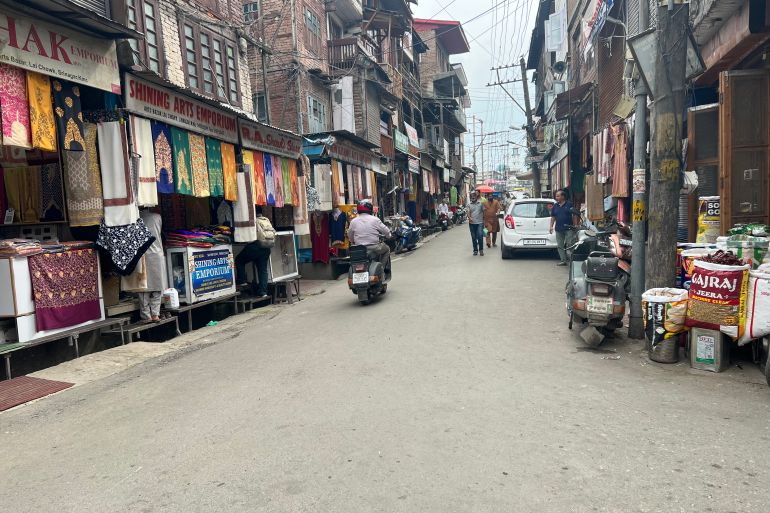
Srinagar, Indian-administered Kashmir – Koker Bazar in Srinagar, Indian-administered Kashmir’s largest city, is associated with traditional markets and centuries-old wooden houses.
The area is also known for producing Majeed Kakroo, one of the finest footballers to turn up for India who had to leave the game at the height of his career due to armed rebel threats.
Keep reading
list of 4 itemsHow football is helping Yemenis cope with the prolonged war
‘Football was the only thing that made me feel at home’
From growing up in a Rio favela to becoming a football coach
Decades ago, Koker Bazar was a congested residential locality with few shops. Just a few hundred metres away from the political centre stage of Kashmir’s historic Lal Chowk (Red Square), the area served as the hub of its traditional handicraft industry with an emerging new business class.
The neighbourhood also shared a passion for football.
It was from these narrow alleys of Koker Bazar that Kakroo, now 60, emerged as a footballer during his teen.
Most of the residents from the neighbourhood of bustling streets have now moved out, mainly driven by the urge of settling in urbanised residential areas.
The area now serves as a full-fledged market thronged by tourists. Several houses made of mud, wood and bricks still have their original structure intact, standing as a testimony to the region’s past.
The neighbours credit Kakroo, who became the first Kashmiri to have captained the national team during the 1987 Nehru Cup, for igniting the enthusiasm for football in their area.
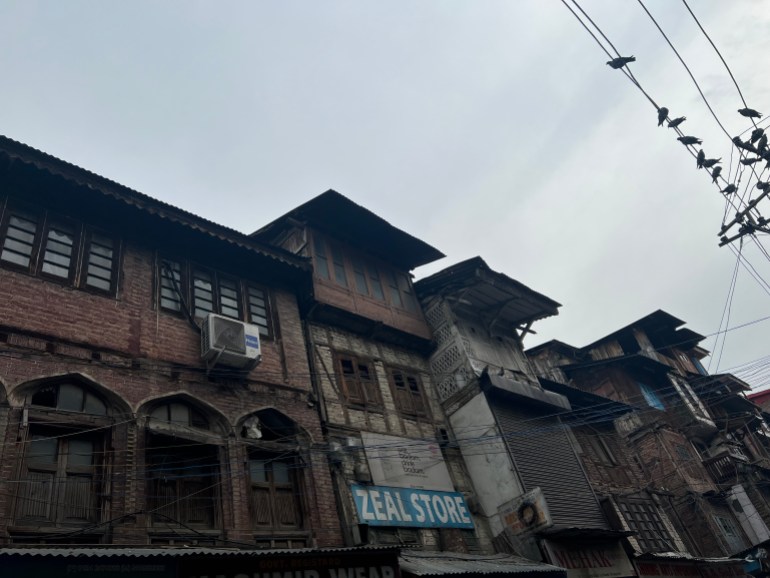
Kakroo stepped into professional football as a 15-year-old in 1977 to represent a government transport department’s team in Kashmir, one of his friends, Farooq Ahmad, told Al Jazeera.
“When he would play at the local ground, there would be spectators from all over Kashmir. There would be no space and people would climb trees to watch the game. There was so much craze about the game,” Ahmad said, recalling memories from the late 1970s and early 80s.
According to residents, Kashmir was relatively a peaceful region in those years, with political discontent against Indian rule running latent.
There was a bustling life – cinemas functioned until late at night and public parks would be brimming with people even after dark.
Stadiums and streets were abuzz with young men playing cricket and football. There was no presence of the Indian military within the public spaces, unlike today.
One of the entry points of Kakroo’s neighbourhood which housed Kashmir’s oldest Palladium Cinema until the late 1980s has now turned into a security garrison.
Kakroo also played for top Indian clubs, Mohun Bagan and East Bengal. As the football wizard continued to make progress after representing the two clubs, Kakroo earned a national team call-up in 1982.
He scored against China and Malaysia in the 1983 President’s Cup and played for India for eight years.
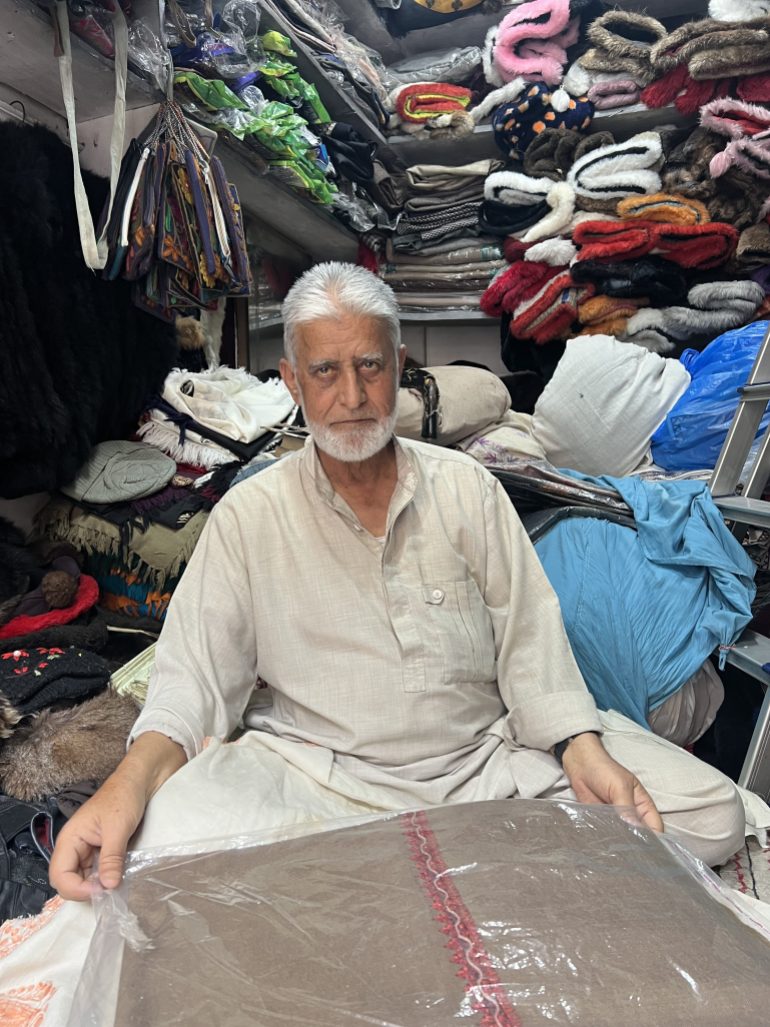
Ghulam Muhammad, 85, another resident of his area, remembers Kakroo as a witty boy and points towards his old two-room wooden house that stands at the top of a departmental store today.
Residents lament that the glory of the streets is long gone. The old houses have turned into warehouses for stores and some have even been demolished.
There are shops on every street, selling shawls, handicraft products, groceries and jewellery. Despite the expanding market, the violence and militarisation in the region have changed people’s routines.
At dusk, shopkeepers bring down their shutters and everyone rushes home, making the streets desolate by night-time. There exists no nightlife in Kashmir. There is no longer a rush of young men waiting to play in the streets any more.
Muhammad’s five-decade-old shop of Kashmiri shawls is located opposite Kakroo’s old house.
“His [Kakroo’s] father was a vegetable seller. Kakroo used to play here till late at night after the shops had closed. Every child followed him. Kakroo is not formally educated but he knows only one language and that is football which gave him recognition in the whole of Kashmir,” Muhammad said.
Muhammad’s early memories of watching Kakroo as a kid was seeing him stuffing rubbish into a cloth bag and turning it into a football.
“When he was a child, he could not afford a ball but still played with the bag. He would produce something magical. We would laugh and be surprised at the same time. He did not have proper shoes and would hurt his feet at times.
“If there was a rotten reddish or cabbage that his father would keep aside, he would play with them. His feet didn’t rest and he would want to keep going,” Muhammad said.
Another neighbour, 70-year-old Muhammad Ashraf Bhat, described Kakroo as someone who made people fall in love with football even though it was not a very popular sport in the region.
“The streets would be abuzz and bustling at night as the kids continued playing. He would have made a lot of progress if he did not belong to a place like Kashmir, We are all still very proud of his achievements.”
One of the people in the locality who started playing football after getting inspired by Kakroo is his friend and neighbour, Showkat Hussain.
“It was in the 1970s when we used to play in the streets. Kakroo was our inspiration, we all wanted to play like him,” 55-year-old Hussain, who runs a spice shop in the market, told Al Jazeera.
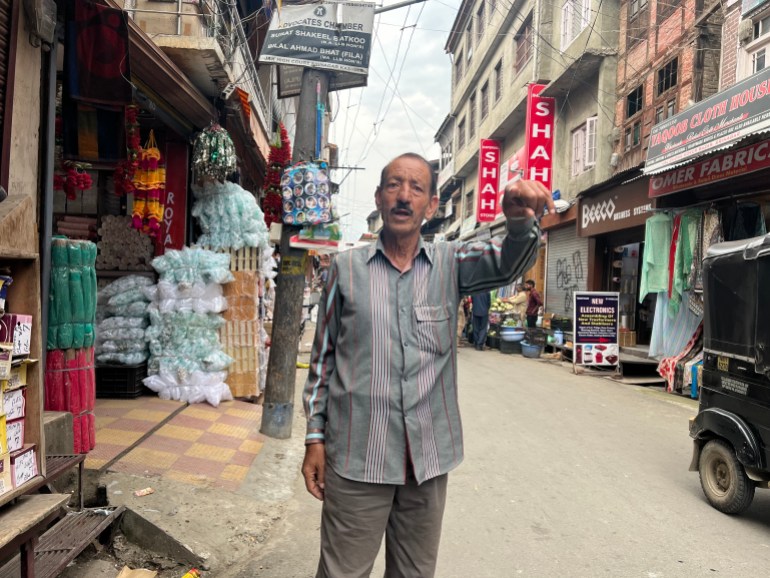
“I can’t tell you what Kashmir looked like, I can’t explain it. It was a beautiful and peaceful place. Along with Kakroo, we used to play football and there was no fear. We didn’t have money, but we were happy because we could play carefree,” he recalled, years before 1989 when the armed uprising erupted in Kashmir and crippled normal life.
Thousands of people, mostly civilians, have been killed in the last three decades of turmoil following the armed uprising.
India and Pakistan have fought two of three wars over the disputed Kashmir region, with the two neighbours claiming the region in its entirety but ruling over parts of it.
Football was not immune to the rising tensions and eventually made a visible effect on Kakroo’s career.
In 1989, while Kakroo was busy building his national career, his neighbours recall that he was forced to cut short his journey after threats from rebel groups who told him “not to represent the Indian team”.
“As tensions grew in Kashmir, he had to come back because of threats against his family,” one of his neighbours, who wished to remain anonymous, told Al Jazeera. “He left playing in the team and came back to Kashmir.”
Once back in Kashmir, Kakroo did not stop playing and started coaching and training young boys.
“Hundreds of young boys were able to get jobs with various teams. Many were able to secure a place as players to represent government departments,” another neighbour of Kakroo, Shafaqat Ahmad, told Al Jazeera.
“When his father was on his deathbed, he held Kakroo’s hand and asked him to promise that he will continue training young Kashmiri boys till he can, and that’s exactly what he is doing.”
Koker Bazar is a transformed area due to decades of turmoil and uncertainty, the love for Kakroo and football, at large, has not dwindled.
There are two state-of-the-art football turfs available for youngsters close to Kakroo’s house. Every evening, hundreds of passionate footballers, wearing different jerseys, can be seen practising on these turfs.
It is here Kakroo can be seen on any given day, training a new generation of Kashmir’s footballers.
